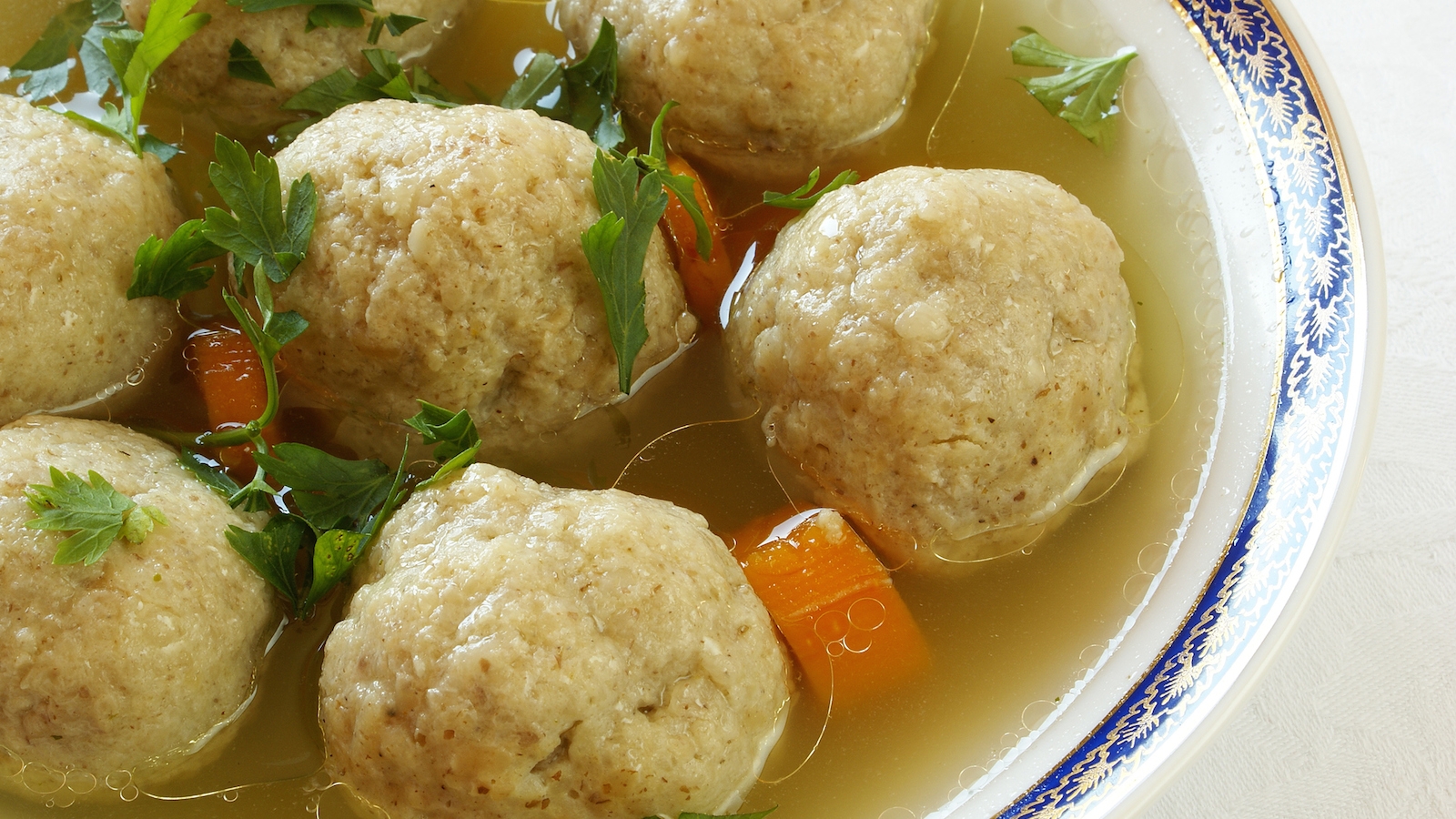Question: What is the difference between kneidlach, matzah balls and kreplach? This question has been bothering me for a long time.
–Sally, New York City
Answer: Kneidlach and kreplach should never bother you, Sally. They should be delicious, and they should warm the cockles of your heart. Trust me.
Kneidlach is actually just another word for matzah balls, which are those golden dumplings commonly found swimming in chicken soup. Kneidlach are traditionally made from crushed matzah, eggs, and fat (usually chicken schmaltz) but there are countless ways to personalize your matzah balls to your preferences. We have a variety of recipes on our matzah balls page and a simple Google search will turn up dozens more, including vegan, gluten free, and spicy.
Because of their matzah base, matzah balls are traditionally eaten on Passover, but are common throughout the year. In Lithuania, some women used to make kneidlach with a little bit of fried schmaltz in the middle of each dumpling. These kneidlach were called “matzah balls with souls,” and though presumably delicious, it’s very rare to find a kneidlach with any kind of filling today.
With your help, My Jewish Learning can provide endless opportunities for learning, connection and discovery.
Kreplach, on the other hand, are dumplings that are always stuffed, though the stuffing varies. I’m familiar with meat, potato, cheese, and even poached prune kreplach, so you should feel free to get creative when making them.
Whatever filling you choose, the outside of a krepl should be made of paper thin pasta, which you can make at home, or you can use wonton wrappers, available at most Asian grocery stores. Ideally, kreplach should be triangular, with each of the three points representing one of the forefathers of Judaism. If this proves too difficult in practice–just do your best and don’t worry too much about the shape. Once you have a knack for making perfectly triangular kreplach, consider making them for Purim, a custom that has developed because their shape is similar to that of hamantaschen.
Need more tips for making matzah balls? Behold:
kneidlach
Pronounced: k'NAY-duh-lukh, Origin: Yiddish, mazah balls.
kreplach
Pronounced: KREP-lakh, Origin: Yiddish, small dumplings, often filled with meat and served in soup.



